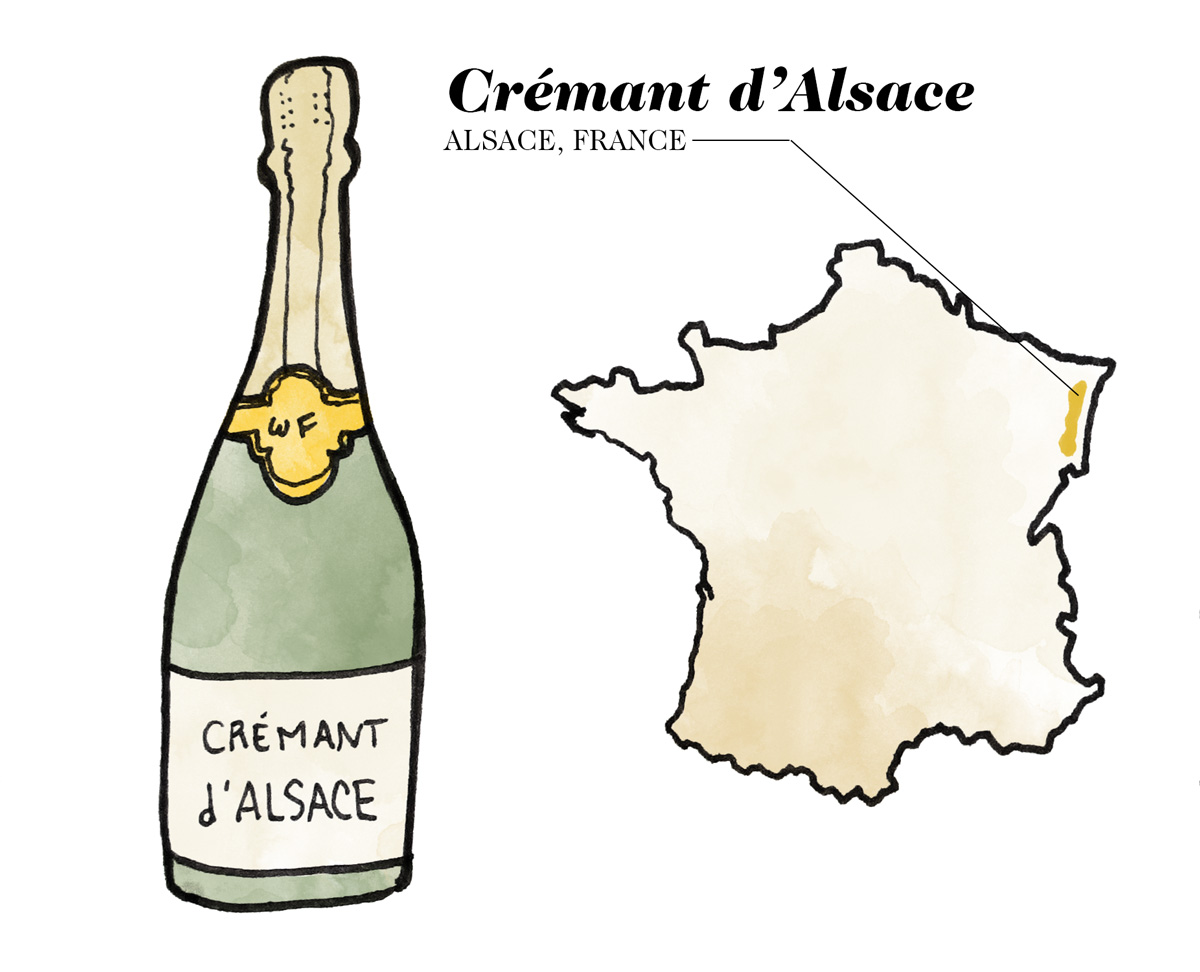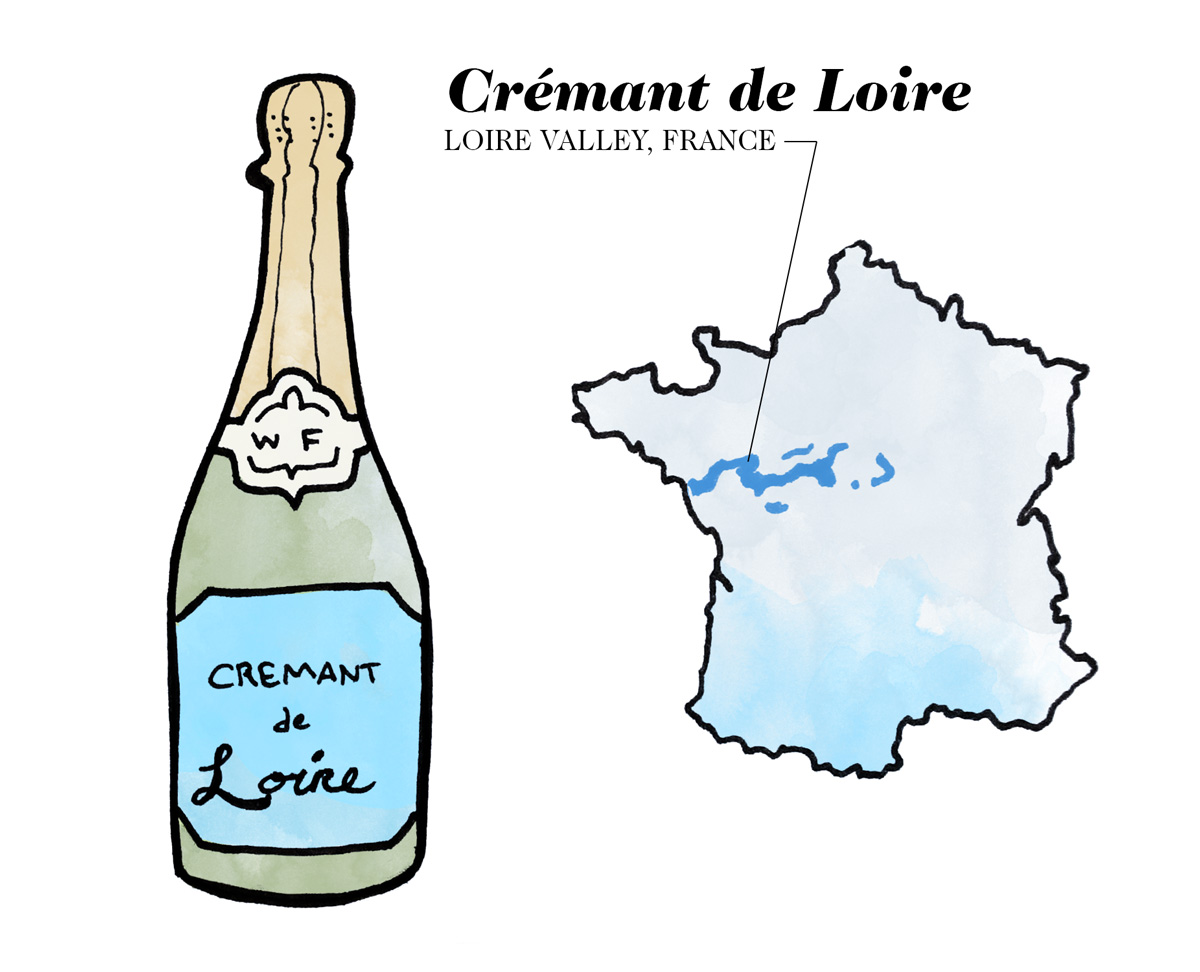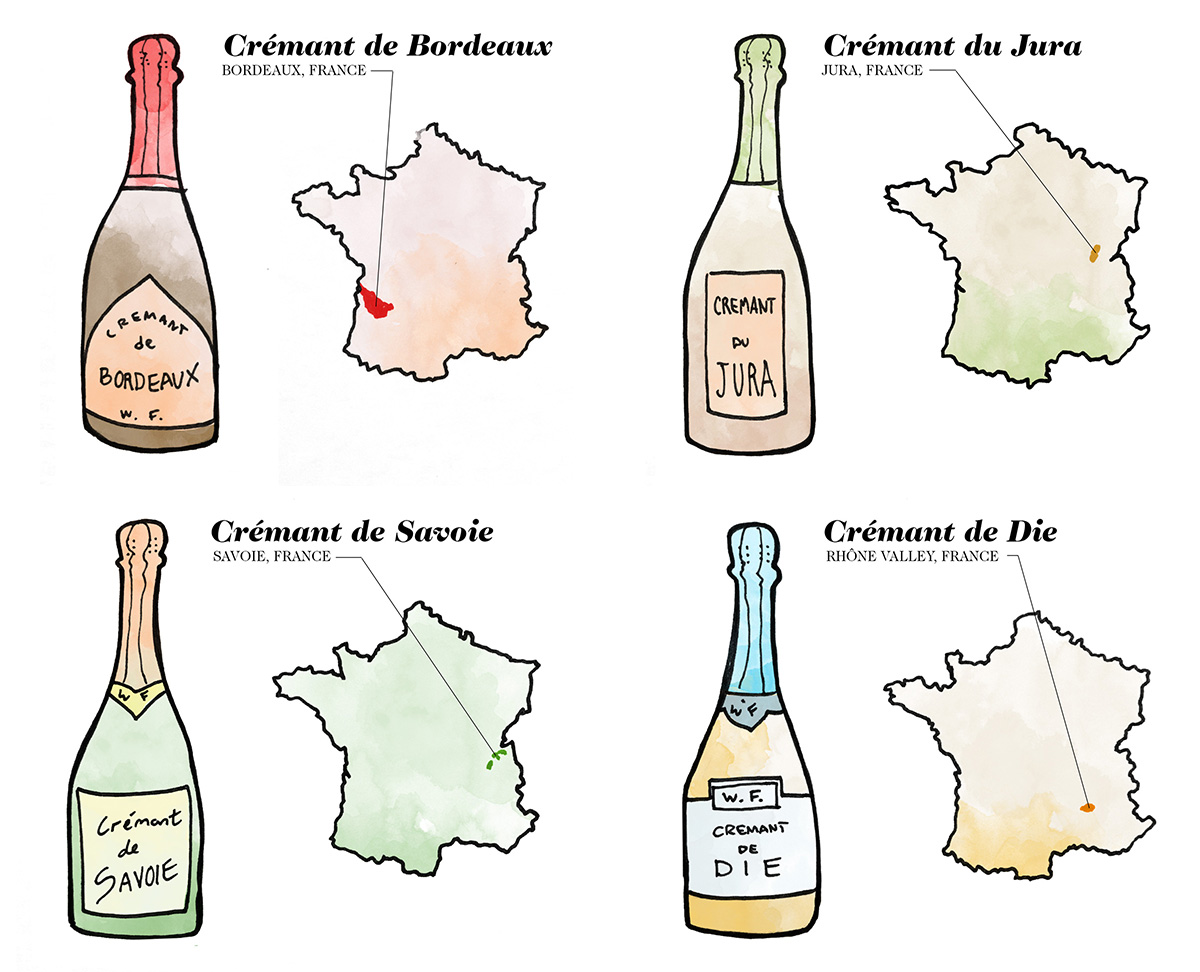Crémant is a group of sparkling wines made with the same technique as Champagne, but from outside the Champagne region. This article details the nine different Crémant wines of France and Luxembourg.
Do you have “Champagne taste on a beer budget?”
There is a group of sparkling wines that will satisfy your desire for high quality bubbly. Crémant employs labor-intensive secondary bottle fermentation, as does Champagne. There are a wide variety of styles to choose from, as Crémant is made in eight different appellations throughout France (and can also be found in neighboring Luxembourg).
A Great Alternative to Champagne
Crémant regulations are only slightly less stringent than those in Champagne. The quality found in these wines comes in part from France’s rigorous wine laws. Although regional rules can vary, all Crémant wines must adhere to specific requirements. These include manual harvesting of grapes, whole bunch pressing with limited must extraction (100 liters of juice from 150 kg grapes–think of it as extra virgin olive oil), and a minimum of nine months lees aging.
Here are the details on Crémant wines so you can find what you like:
Crémant d’Alsace
- White: Pinot Blanc, Auxerrois, Pinot Gris, Riesling, Chardonnay, Pinot Noir
- Rosé: 100% Pinot Noir required for rosé
The picturesque region of Alsace is nestled in the foothills of the Vosges Mountains of Northeast France. More than 50% of all French Crémant is made here.
Grapes ripen well in Alsace, thanks to the dry, sunny climate made possible by the adjacent mountain shelter. The soils are a true mosaic, resulting from alluvial fans, and can support a large array of grape varieties. Crémant de Alsace may be single varietal (and labeled as such), but most are, in fact, a blend, using Pinot Blanc as the base.
Crémant de Bourgogne
- White: Chardonnay and Pinot Noir with occasional use of Gamay, Pinot Blanc, Sacy, Pinot Gris, Aligoté, and/or Melon de Bourgogne
- Rosé: Pinot Noir and sometimes Gamay
Burgundy is just south of Champagne, lauded for its still versions of Chardonnay and Pinot Noir-based wines. Crémant de Bourgogne production occurs mainly in the northern area of Auxerre (Chablis), or further south in Rully (Côte Chalonnaise).
Crémant here can range from the fresh and crisp northern styles to rounder and fuller wines from southern Burgundy, where grapes can achieve greater ripeness. Made using the traditional method, most often with Chardonnay and Pinot Noir dominating, Crémant de Bourgogne shares similarities to its more expensive and famous Champagne neighbors. With shorter aging requirements, though, these wines can be less complex.
Crémant de Bourgogne Label Tips
If you’re looking for great quality, here are two terms to seek out on a bottle of Crémant de Bourgogne:
- Eminent: Minimum of 24 months on the lees
- Grand Eminent: Minimum 36 months on the lees, only Pinot Noir and Chardonnay (with a maximum of 20% Gamay for rosés) permitted, minimum 10% alcohol, brut or drier in style/dosage
Crémant de Limoux
- White and Rosé: Chardonnay, Chenin Blanc, Mauzac (locally called Blanquette), Pinot Noir
Located in the cooler, high foothills of the Pyrenean Mountains of Southern France is Limoux (Languedoc-Roussillon).
Crémant de Limoux is most often made from Chardonnay and Chenin Blanc. Mauzac and Pinot Noir are used as blending grapes. This region has a long history of sparkling wine production. Blanquette Méthode Ancestrale and Blanquette de Limoux are two traditional sparklers made predominantly from Mauzac. The former uniquely undergoes finishing of the first fermentation in the bottle itself, without any allowed dosage or disgorgement of the spent yeast cells.
Who Was the First To Make Sparkling Wine?
It has been elegantly debated with a great deal of historic rigor that Limoux – not Champagne – was the first region in France to produce sparkling wine. That said, if you ask an English person who invented bubbly, they’ll tell you, with equally convincing fervor, that is was them. If you ask us, we say “Thank you!” and “Salut!” to all three!
Crémant de Loire
- Primary Grapes: Chenin Blanc, Cabernet Franc, Pinot Noir
- Others: Chardonnay, Cabernet Sauvignon, Arbois, Pineau d’Aunis, Grolleau, Grolleau Gris
Crémant de Loire is made in the Anjou-Saumur and Touraine regions of the lush Loire Valley.
The predominant use of Chenin Blanc lends these high-quality wines unique flavors of lemon, quince, pear, honey, and chamomile. Although many grapes are allowed in Crémant production here, the star of the Central Vineyards of the Loire, Sauvignon Blanc, is not. If you want to try a Sauvignon Blanc-based Crémant, you’ll have to look to Bordeaux, the only appellation that permits its use in the mix.
Other Crémant Crémant du Jura, Crémant de Savoie, Crémant de Die, and Crémant de Bordeaux
- Crémant de Bordeaux: Primarily Merlot along with Cabernet Franc, Cabernet Sauvignon, Carmenère, Malbec, and Petit Verdot, Sauvignon Blanc, Sémillon and/or Muscadelle
- Crémant du Jura: Chardonnay, Pinot Noir, Poulsard, Savagnin, Pinot Gris, Poulsard, Trousseau
- Crémant de Savoie Jacquère, Altesse, Chardonnay, Chasselas, Aligoté
- Crémant de Die Primarily Clairette, possibly with some Muscat Blanc à Petits Grains and/or Aligoté
The large variety of approved grapes can produce unique expressions of Crémant in these regions. At times, strong variations in style can make it difficult to pin down a regional identity. In areas like Bordeaux, these wines are often overshadowed by the famous still red, white, and sweet white wines of the region. Crémant production from these appellations can be harder to find in export markets, but are certainly worth a sip if you do.
Crémant de Luxembourg
Outside of France, the name “Crémant” is legally limited in use to Luxembourg. It’s made from grapes grown in the Moselle district under the Moselle Luxembourgeoise Appellation. Common varietals used include Riesling, Pinot Blanc, Rivaner (Müller Thurgau), Elbling, Auxerrois, Pinot Noir (for rosé), and Chardonnay.
Still craving Champagne on the cheap? Check out Wine Folly’s Best Cheap Champagne article.





